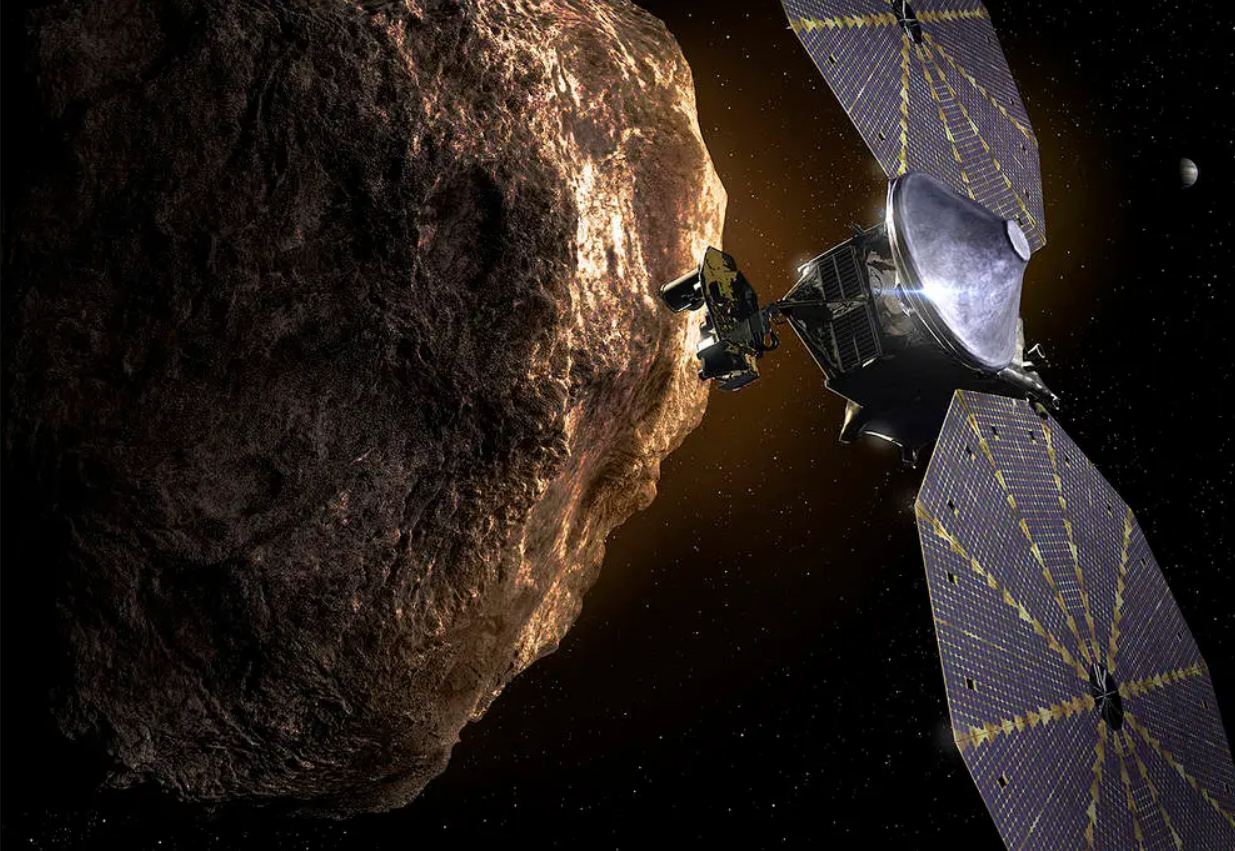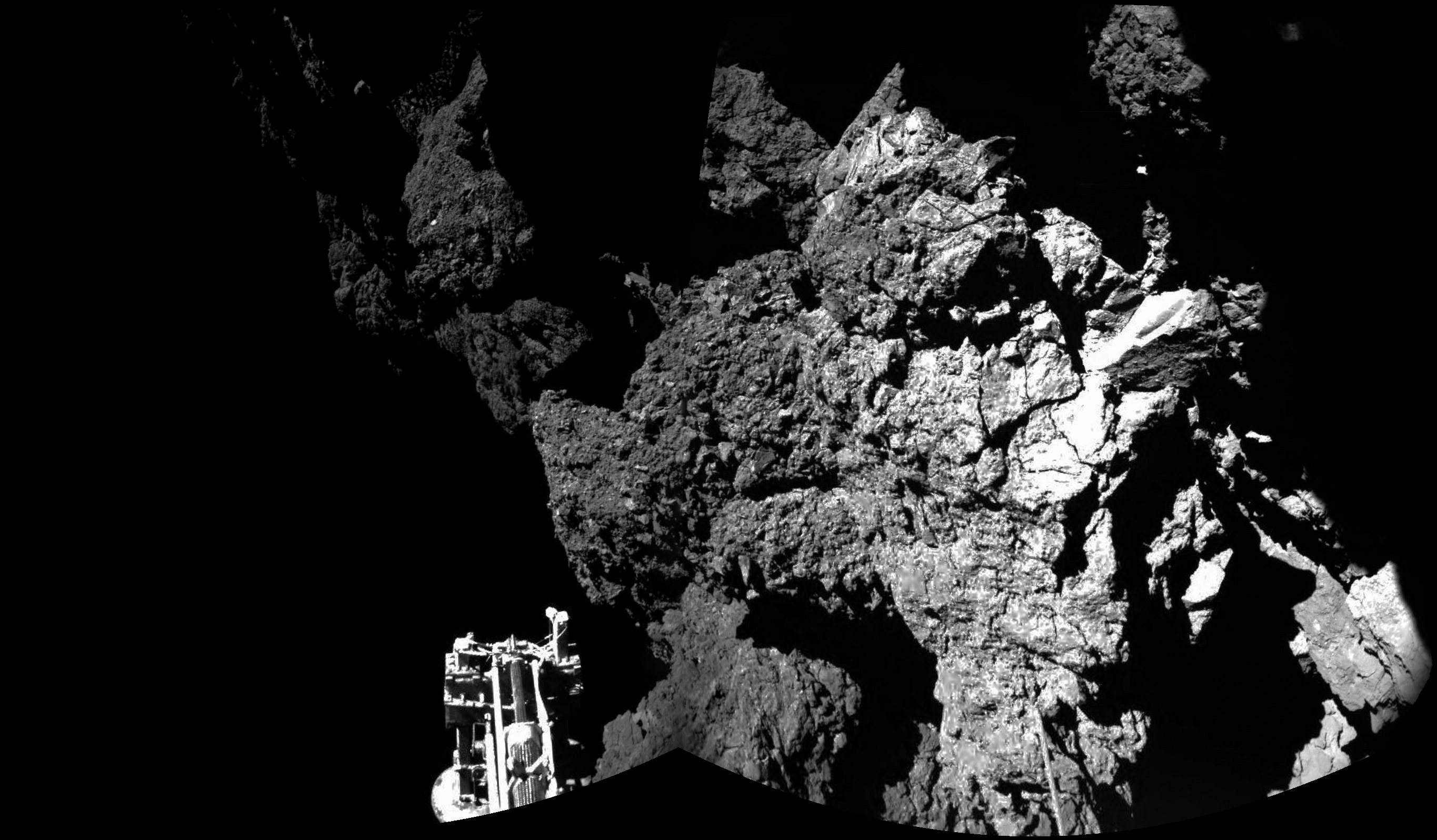Missions to asteroids have been on a tear recently. Visits by Rosetta, Osirix-REX, and Hayabusa2 have all visited small bodies and, in some cases, successfully returned samples to the Earth. But as humanity starts reaching out to asteroids, it will run into a significant technical problem – bandwidth. There are tens of thousands of asteroids in our vicinity, some of which could potentially be dangerous. If we launched a mission to collect necessary data about each of them, our interplanetary communication and control infrastructure would be quickly overwhelmed. So why not let our robotic ambassadors do it for themselves – that’s the idea behind a new paper from researchers at the Federal University of São Paulo and Brazil’s National Institute for Space Research.
Continue reading “If We Want to Visit More Asteroids, We Need to Let the Spacecraft Think for Themselves”Even Comets Can Have Auroras. Comet 67P/Churyumov-Gerasimenko Does
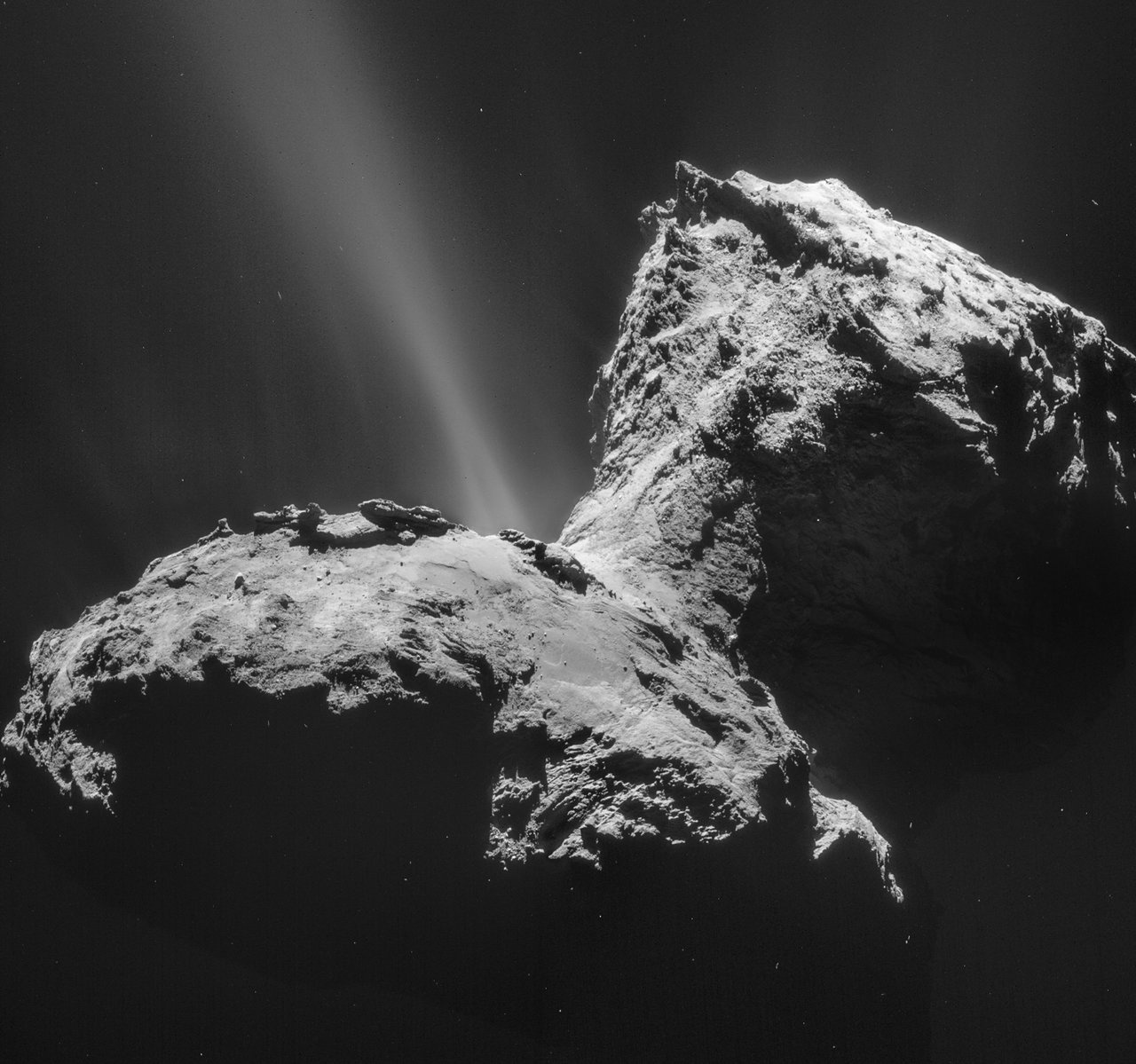
The ESA’s Rosetta mission to Comet 67P/Churyumov-Gerasimenko ended four years ago. On September 30th 2016 the spacecraft was directed into a controlled impact with the comet, putting an end to its 12.5 year mission. Scientists are still working with all its data and making new discoveries.
A new study based on Rosetta data shows that Comet 67P has its own aurora.
Continue reading “Even Comets Can Have Auroras. Comet 67P/Churyumov-Gerasimenko Does”Rosetta Saw Collapsing Cliffs and Other Changes on 67P During its Mission
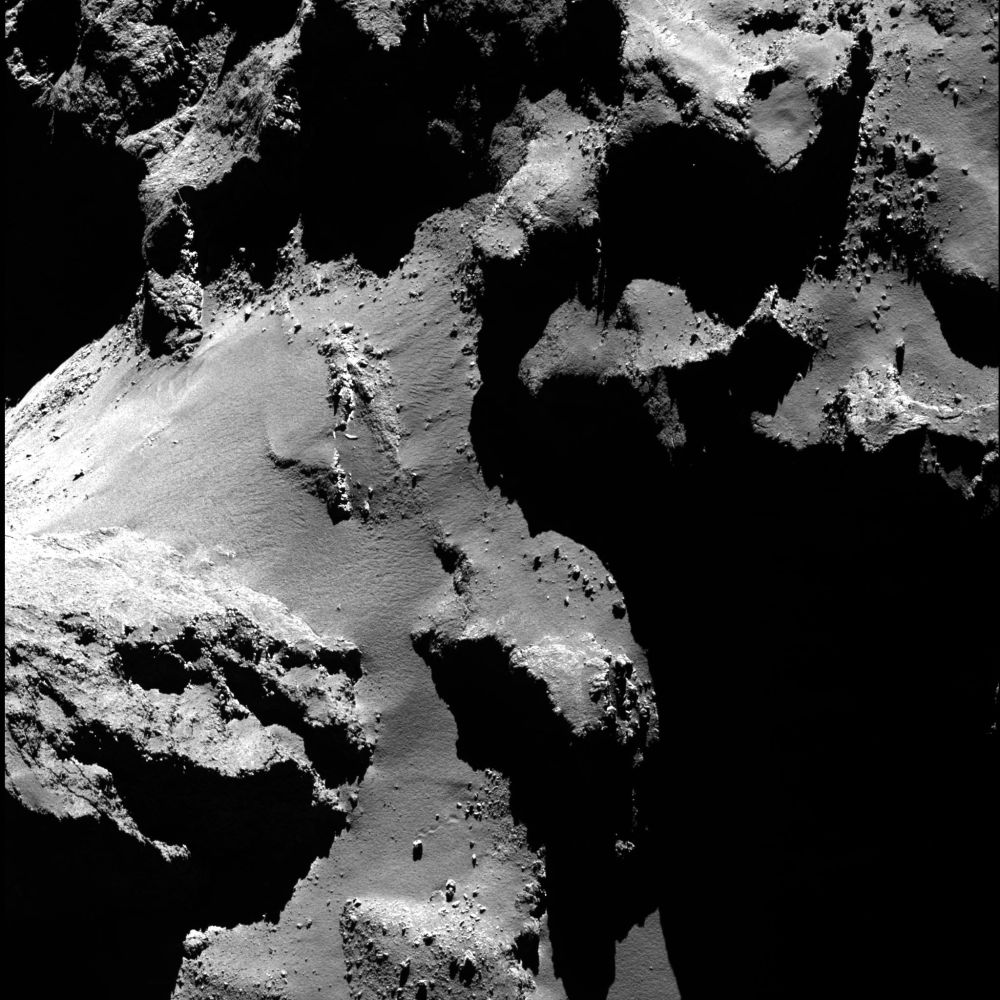
It seems that comet 67P/Churyumov–Gerasimenko is not the stoic, unchanging Solar System traveller that it might seem to be. Scientists working through the vast warehouse of images from the Rosetta spacecraft have discovered there’s lots going on on 67P. Among the activity are collapsing cliffs and bouncing boulders.
Continue reading “Rosetta Saw Collapsing Cliffs and Other Changes on 67P During its Mission”New Image Shows the Rugged Landscape of Comet 67P
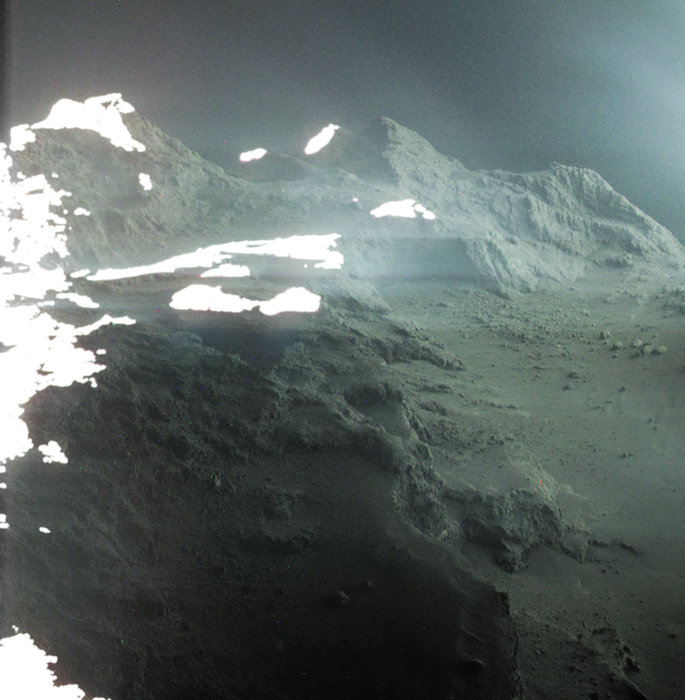
In March of 2004, the European Space Agency’s Rosetta spacecraft blasted off from French Guiana aboard an Ariane 5 rocket. After ten years, by November of 2014, the spacecraft rendezvoused with its target – Comet 67P/Churyumov-Gerasimenko (67P/C-G). Over the more than two years that followed, the spacecraft remained in orbit of this comet, gathering information on its surface, interior, and gas and dust environment.
And on September 30th, 2016, Rosetta came closer than ever to the surface of 67P/C-G and concluded its mission with a controlled impact onto the surface. Since that time, scientists have still been processing all the data the spacecraft collected during its mission. This included some awe-inspiring photographs of the comet’s surface that were obtained shortly after the spacecraft made its rendezvous with 67P/C-G.
Continue reading “New Image Shows the Rugged Landscape of Comet 67P”
This was the Snowstorm Rosetta Saw When it Got 79 km Away From Comet 67P

In August of 2014, the ESA’s Rosetta mission made history when it rendezvoused with the Comet 67P/Churyumov–Gerasimenko. For the next two years, the probe flew alongside the comet and conducted detailed studies of it. And in November of 2014, Rosetta deployed its Philae probe onto the comet, which was the first time in history that a lander was deployed to the surface of a comet.
During the course of its mission, Rosetta revealed some truly remarkable things about this comet, including data on its composition, its gaseous halo, and how it interacts with solar wind. In addition, the probe also got a good look at the endless stream of dust grains that were poured from the comet’s surface ice as it approached the Sun. From the images Rosetta captured, which the ESA just released, it looked a lot like driving through a snowstorm!
The image below was taken two years ago (on January 21st, 2016), when Rosetta was at a distance of 79 km from the comet. At the time, Rosetta was moving closer following the comet reaching perihelion, which took place during the previous August. When the comet was at perihelion, it was closer to the Sun and at its most active, which necessitated that Rosetta move farther away for its own protection.
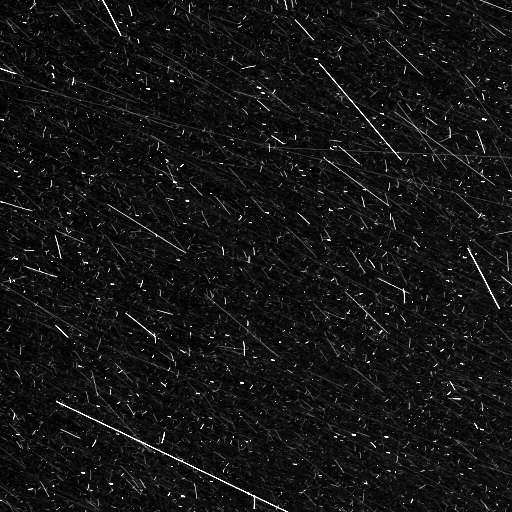
As you can see from the image, the environment around the comet was extremely chaotic, even though it was five months after the comet was at perihelion. The white streaks reveal the dust grains as they flew in front of Rosetta’s camera over the course of a 146 second exposure. For the science team directing Rosetta, flying the spacecraft through these dust storms was like trying to drive a car through a blizzard.
Those who have tried know just how dangerous this can be! On the one hand, visibility is terrible thanks to all the flurries. On the other, the only way to stay oriented is to keep your eyes pealed for any landmarks or signs. And all the while, there is the danger of losing control and colliding with something. In much the same way, passing through the comet’s dust storms was a serious danger to the spacecraft.
In addition to the danger of collisions, flying through these clouds was also hazardous for the spacecraft’s navigation system. Like many robotic spacecraft, Rosetta relies on star trackers to orient itself – where it recognizes patterns in the field of stars to orient itself with respect to the Sun and Earth. When flying closer to the comet, Rosetta’s star trackers would occasionally become confused by dust grains, causing the craft to temporarily enter safe mode.
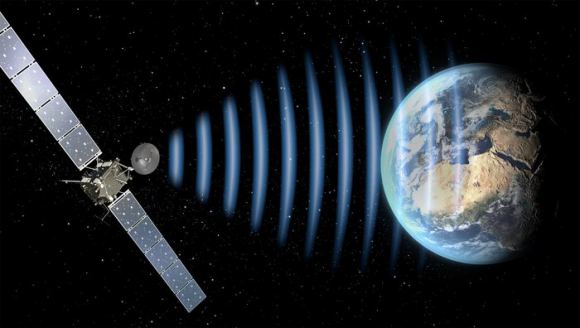
This occurred on March 28th, 2015 and again on May 30th, 2016, when Rosetta was conducting flybys that brought it to a distance of 14 and 5 km from the comet’s surface, respectively. On both occasions, Rosetta’s navigation system suffered from pointing errors when it began tracking bright dust grains instead of stars. As a result, on these occasions, the mission team lost contact with the probe for 24 hours.
As Patrick Martin, the ESA’s Rosetta mission manager, said during the second event:
“We lost contact with the spacecraft on Saturday evening for nearly 24 hours. Preliminary analysis by our flight dynamics team suggests that the star trackers locked on to a false star – that is, they were confused by comet dust close to the comet, as has been experienced before in the mission.”
Despite posing a danger to Rosetta’s solar arrays and its navigation system, this dust is also of high scientific interest. During the spacecraft’s flybys, three of its instruments studied tens of thousands of grains, analyzing their composition, mass, momentum and velocity, and also creating 3D profiles of their structure. By studying these tiny grains, scientists were also able to learn more about the bulk composition of comets.

Before it reached its grand finale and crashed into the comet’s surface on September 30th, 2016, Rosetta made some unique scientific finds about the comet. These included mapping the comet’s surface features, discerning its overall shape, analyzing the chemical composition of its nucleus and coma, and measuring the ratio of water to heavy water on its surface.
All of these findings helped scientists to learn more about how our Solar System formed and evolved, and shed some light on how water was distributed throughout our Solar System early in its history. For instance, by determining that the ratio of water to heavy water on the comet was much different than that of Earth’s, scientists learned that Earth’s water was not likely to have come from comets like Comet 67P/Churyumov–Gerasimenko.
On top of that, the spacecraft took more than a hundred thousand image of the comet with its high-resolution OSIRIS camera (including the ones shown here) and its navigation camera. These images can be perused by going to the ESA’s image browser archive. I’m sure you’ll agree, they are all as beautiful as they are scientifically relevant!
Further Reading: ESA
Here’s Something We Never Thought We’d See on a Comet: Shifting Dunes
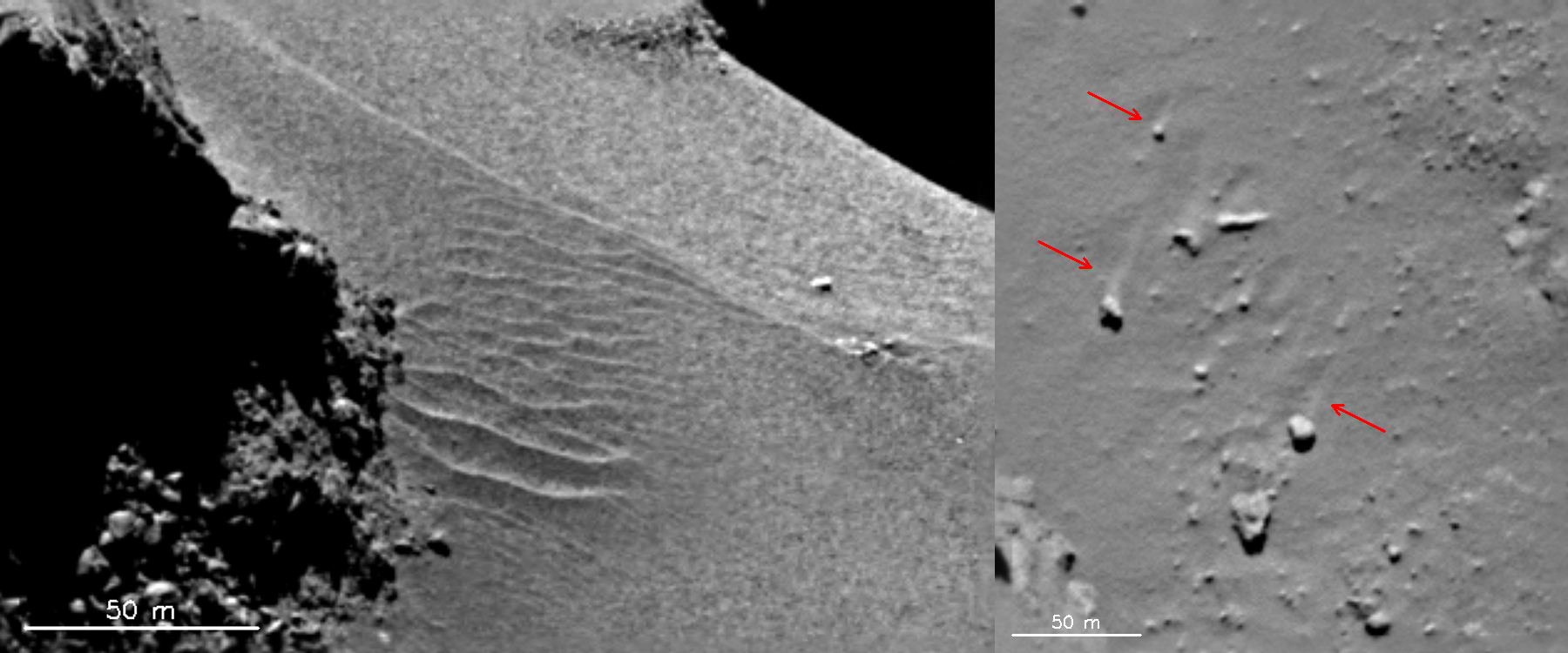
The Rosetta mission’s close-up views of the curiously-shaped Comet 67P/Churyumov-Gerasimenko have already changed some long-held ideas about comets. But here’s more: there’s a ‘wind’ blowing across the comet’s surface, creating moving shifting dunes.
“The approach to comet 67P/Churyumov–Gerasimenko by the spacecraft Rosetta has revealed the presence of astonishing dune-like patterns,” wrote Philippe Claudin, of the Institute of Industrial Physics and Chemistry, Paris, France, in his new paper, noting the unusual and unexpected conditions found on Comet 67P.
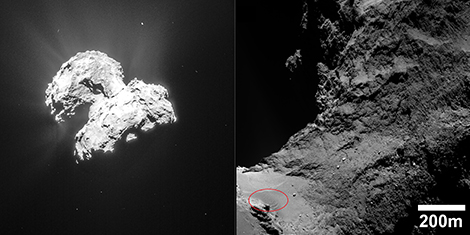
Images from Rosetta’s cameras revealed the dusty covering of the comet may be several meters thick in places, which was surprising. But even more surprising was seeing active dunes that are changing. The dunes were seen on both of the ‘lobes’ of the comet as well as on the neck that connects them. Comparisons images taken 16 months of the same region shows evidence that the dunes moved, and are therefore active.
Claudin and his team said that the formation of sedimentary dunes requires the presence of grains and of winds that are strong enough to transport them along the ground. However, comets do not have a dense, permanent and active atmosphere like Earth does. Also, Comet 67P’s gravity is so weak – only about 1/50,000 that of Earth’s – that fast moving grains might be ‘launched’ into space.
What could be creating a wind strong enough that not only moved the grains, but also some boulders up to a meter wide?
There is indeed a wind blowing along the comet’s surface, said Claudin, coming from gases that escape from the surface.
Gases escape at ‘sunset’ on the comet, caused by the pressure difference between the sunlit side, where the surface ice can sublimate due to the energy provided by the sunlight, and the night side.
“This transient atmosphere is still extremely tenuous, with a maximum pressure at perihelion, when the comet is closest to the Sun, 100,000 times lower than on Earth,” the team said in a press release. “However, gravity on the comet is also very weak, and an analysis of the forces exerted on the grains at the comet’s surface shows that these thermal winds can transport centimeter-scale grains, whose presence has been confirmed by images of the ground. The conditions required to allow the formation of dunes, namely winds able to transport the grains along the ground, are thus met on Chury’s surface.”
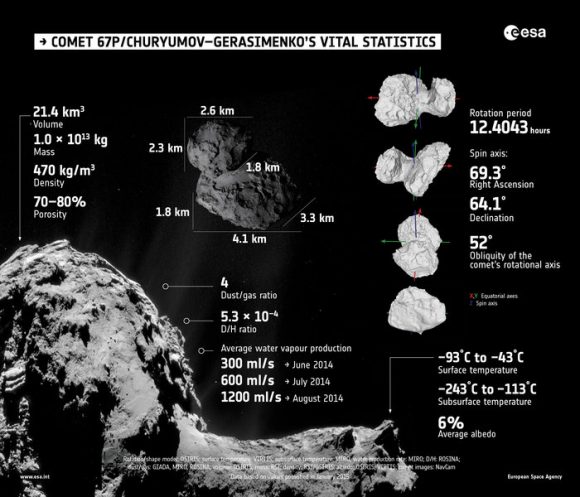
The transportation of dust has created dune-like ripples, and boulders with ‘wind-tails’ – the boulders act as natural obstacles to the direction of the gas flow, creating streaks of material ‘downwind’ of them.
Claudin said this finding represents a step forward in understanding the various processes at work on cometary surfaces, and also shows the Rosetta mission still has many surprises and discoveries in store.
Paper: Giant ripples on comet 67P/Churyumov–Gerasimenko sculpted by sunset thermal wind
Goodbye Forever Philae; We Hardly Knew Ye
You can’t say they didn’t try, but the news is sad nonetheless. ESA announced the mission for the Philae lander – the first spacecraft to ever land on a comet — is officially over. The system that enables communications between the Rosetta spacecraft and Philae – which sitting in a shaded region on Comet 67P/Churyumov-Gerasimenko – is being switched off on July 27, 2016, at 09:00 UTC.
“It’s time for me to say goodbye,” Philae tweeted on Tuesday. “Tomorrow, the unit on @ESA_Rosetta for communication with me will be switched off forever…”
Philae has mostly been in hibernation after its dramatic touchdown (actually, three or maybe four touchdowns) on Nov. 12, 2014 when it separated from the orbiting Rosetta spacecraft, flew, landed, bounced and then repeated that process for more than two hours across the surface. The harpoons that were to anchor Philae to the surface failed to fire, and scientists estimated the lander may have bounced as high as 3.2 kilometers (2 miles) before becoming wedged in the shadows of a cliff on the odd-shaped comet. The solar-powered lander quickly ran out of power, just hours after landing. Philae’s final location has been plotted but never actually seen by Rosetta.
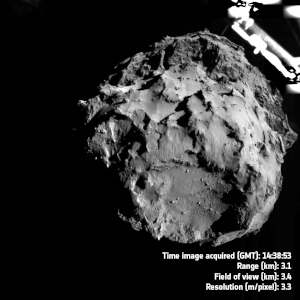
Credits: ESA/Rosetta/Philae/ROLIS/DLR
After months of silence, the team heard briefly from Philae on June 13, 2015, when it transmitted information on its power and computer subsystems. It then made seven intermittent contacts with Rosetta in the following weeks, with the last coming on July 9, but the communications were too short and unstable to transmit or receive any meaningful scientific or engineering data.
Since then, the Support System Processor Unit (ESS) on Rosetta was kept on in the unlikely chance that Philae would wake up and try to reestablish contact. The hope was that when the comet was closer to the Sun, it might receive enough light to power up.
But the reason for turning it off now is due to Rosetta’s own impending end of mission, coming on September 30, 2016 when it will make a controlled impact at the Ma’at region on the comet’s “head.” Emily Lakdawalla of The Planetary Society put together this annotated image of sites where Philae touched down and likely landed, and where Rosetta will end up:
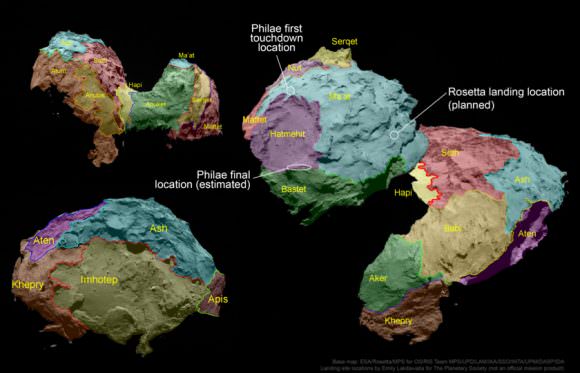
Base map: ESA / Rosetta / MPS for OSIRIS Team MPS / UPD / LAM / IAA / SSO / INTA / UPM / DASP / IDA. Landing site locations: Emily Lakdawalla.
The team decided to keep “Rosetta’s listening channel on until it is no longer possible due to power constraints as we move ever further from the Sun towards the end of the mission,” said Patrick Martin, ESA’s Rosetta mission manager.
Martin said that by the end of this week, the spacecraft will be about 520 million km from the Sun, and will start facing a significant loss of power – about 4W per day. In order to continue scientific operations over the next two months and to maximize their return, it became necessary to start reducing the power consumed by the non-essential payload components on board.
But, Martin added that the mission of Philae and Rosetta will always be remembered as an incredible success.
“The combined achievements of Rosetta and Philae, rendezvousing with and landing on a comet, are historic high points in space exploration,” he said.
Philae did achieve 80% of its primary science goals in its short 64-hour active mission, as it took detailed images of the comet from above and on the surface, searched for organic compounds, and profiled the local environment and surface properties of the comet, “providing revolutionary insights into this fascinating world,” ESA said.
Sources: ESA, The Planetary Society, ESA blog

